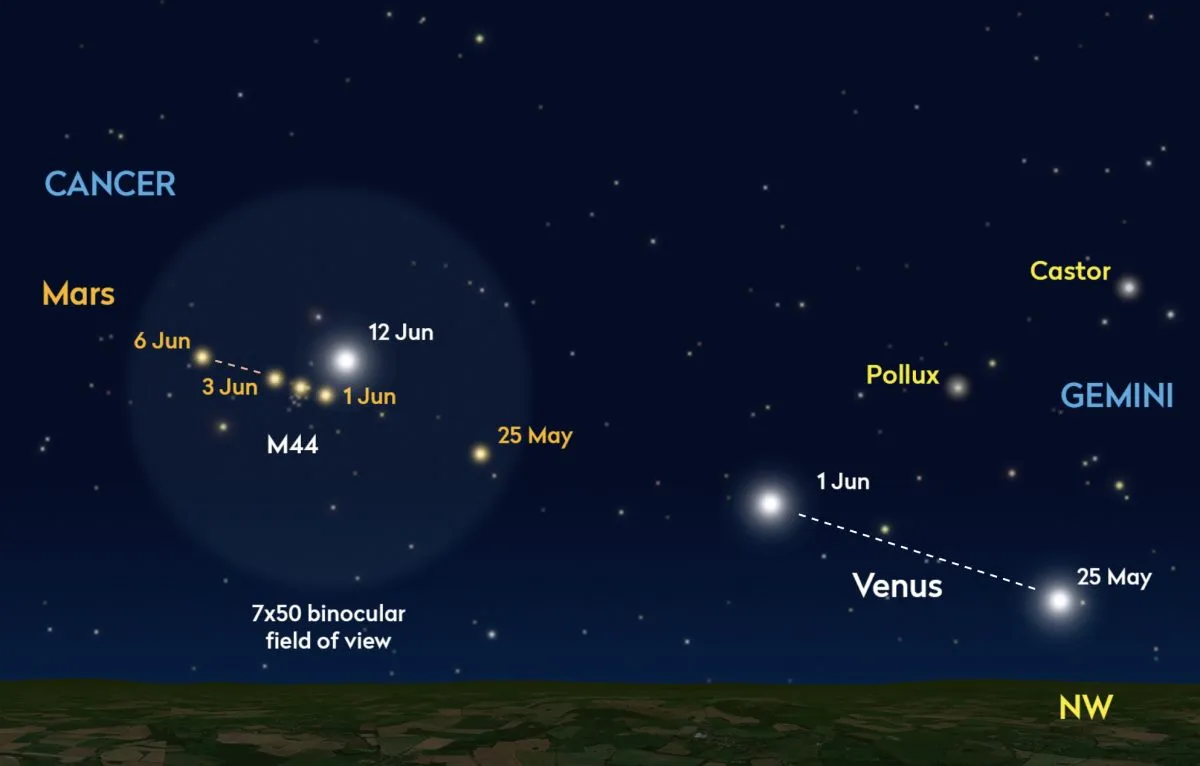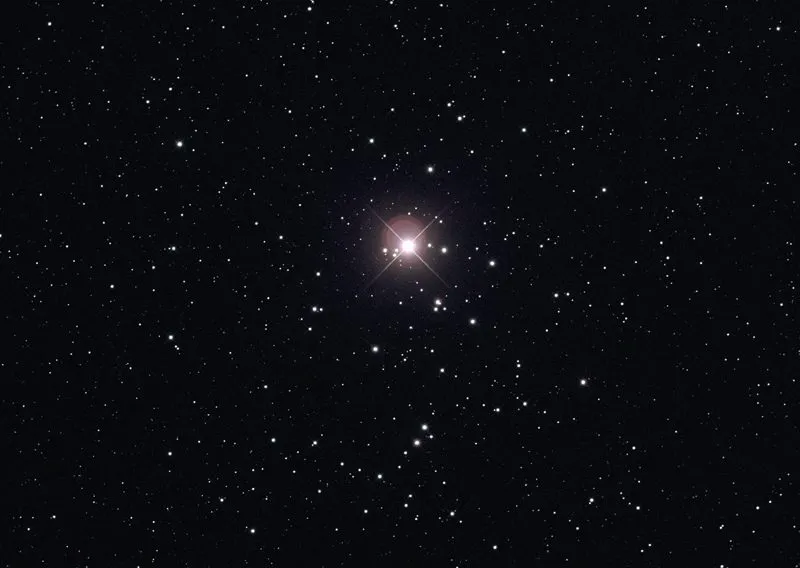The Beehive open cluster, M44, is a wonderful deep-sky object visible in the winter and spring sky.
Its position is less than ideal during June, but despite this, during 2023 it poses an observing challenge as it’s visited by the two main planets, Mars and Venus.
The encounter with Mars was right at the start of June, arguably when the Beehive Cluster was easiest to see.
The best time to see Mars and the Beehive Cluster was 1–3 June, but now it's the turn of Venus and the Beehive Cluster, which can be seen 12-14 June.

Mars and the Beehive
On the evening of 1 June, as Venus gets very low and the evening twilight begins to darken enough to show stars, use binoculars to find Mars.
It’s 10° to the left and slightly up from Venus, pink-orange in colour and shines at mag. 1.6.On this evening, it is located on the western edge of M44.
The brighter cluster stars should be visible using binoculars given a flat west-northwest horizon.
Similarly, a telescope with a camera attached, pointed at Mars, should be able to deliver the cluster as well.
A line-of-sight alignment means that Mars appears within the cluster on the evening of 2 June and slightly to the east of it on the evening of 3 June.
It’s not the easiest sight, but a rewarding challenge given clear skies.

Timings will vary across the UK, so a good rule of thumb is to wait until Venus is at just over 2° altitude.
If using binoculars with a 5° field, the horizon should just be showing at the bottom of the field of view when Venus is centred.
Venus and the Beehive
The Venus–M44 encounter occurs on 12–14 June, Venus passing just north of the cluster.
Bright twilight and low altitude will make this a tough observation.
If you managed to see Mars and M44 earlier in the month, then you’re already prepared for just how difficult this can be.
This guide originally appeared in the June 2023 issue of BBC Sky at Night Magazine.
